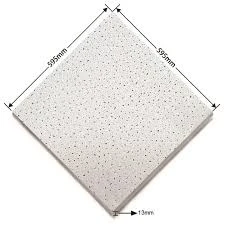- Afrikaans
- Albanian
- Amharic
- Arabic
- Armenian
- Azerbaijani
- Basque
- Belarusian
- Bengali
- Bosnian
- Bulgarian
- Catalan
- Cebuano
- Corsican
- Croatian
- Czech
- Danish
- Dutch
- English
- Esperanto
- Estonian
- French
- German
- Greek
- Hindi
- Indonesian
- irish
- Italian
- Japanese
- Korean
- Lao
- Malay
- Myanmar
- Norwegian
- Norwegian
- Polish
- Portuguese
- Romanian
- Russian
- Serbian
- Spanish
- Swedish
- Thai
- Turkish
- Ukrainian
- Uzbek
- Vietnamese
okt . 18, 2024 08:45 Back to list
Understanding the Materials Used in Ceiling Grid Construction and Their Benefits
What is Ceiling Grid Made Of?
A ceiling grid is an essential component in modern construction and interior design, providing a framework to hold various ceiling materials. Understanding the materials used to create a ceiling grid is crucial for anyone planning a renovation, construction project, or simply exploring options to enhance the aesthetics and functionality of a space. This article explores the various materials that constitute ceiling grids, their benefits, and their applications.
Primary Materials Used in Ceiling Grids
1. Metal The most common material used in ceiling grids is metal, particularly galvanized steel or aluminum. Metal grids are favored for their durability, resistance to warping, and ability to support significant weight. They are often used in commercial buildings, where structural integrity is paramount. Metal grids can also be powder-coated or painted to match different interior designs, providing aesthetic versatility.
2. Vinyl Another popular option is vinyl, which is lightweight and resistant to moisture, making it suitable for areas prone to humidity, such as bathrooms and kitchens. Vinyl grids are easy to install and can be manufactured in various colors and styles. They can also withstand the elements better than wood, making them a practical choice for outdoor spaces or sunrooms.
3. Wood Wood is less common for ceiling grids but can be used in specific applications, particularly in residential settings where aesthetic appeal is a priority. Wooden grids offer a rustic and warm appearance but require more maintenance to avoid issues such as warping and insect damage. Wood can be stained or painted to match the overall decor, allowing for creative designs.
4. Fiberglass Some ceiling grids are made from fiberglass, which provides excellent resistance to moisture and is lightweight. Fiberglass grids are ideal for environments that need additional insulation or noise reduction. They are often used in industrial applications or in areas where hygiene is important, such as laboratories and food processing facilities.
Types of Ceiling Grids
Ceiling grids come in various configurations, each serving different aesthetic and functional purposes. Here are the most common types
- T-Bar Ceiling Grid This type features T shaped cross tees that create a grid pattern. It's widely used for installing acoustic tiles and is popular in commercial applications due to its ease of installation and accessibility.
what is ceiling grid made of

- Suspended Ceiling Grid Also known as a drop ceiling, this grid hangs from the structural ceiling, allowing space for ductwork, electrical wiring, or plumbing
. Suspended grids provide a perfect solution for concealing unsightly elements while adding acoustic benefits.- Direct-Fixed Ceiling Grid Unlike suspended grids, direct-fixed grids attach directly to the ceiling substrate. This type is commonly used in residential applications and offers a seamless look, as there are no visible suspension points.
Benefits of Using Ceiling Grids
1. Flexibility and Adaptability Ceiling grids allow for the easy installation of various ceiling tiles, including acoustic panels, decorative tiles, and lightweight materials. They can be easily modified or expanded as needs change over time.
2. Concealment One of the primary functions of a ceiling grid is to conceal mechanical systems such as HVAC ducting, electrical wiring, and plumbing. This aesthetic advantage helps create a clean and polished look in any space.
3. Sound Absorption Many ceiling tiles compatible with metal or vinyl grids are specifically designed to absorb sound, making them an excellent choice for office spaces, theaters, and other environments where noise reduction is crucial.
4. Ease of Access Suspended ceiling grids allow for easy access to the systems above the ceiling plane. This feature is especially beneficial for maintenance, as ceiling tiles can be easily removed and replaced, providing straightforward access to plumbing and wiring as necessary.
Conclusion
Understanding the materials that make up ceiling grids is vital for making informed design and construction choices. Whether opting for metal for its durability, vinyl for moisture resistance, wood for aesthetic appeal, or fiberglass for lightweight versatility, each material offers unique benefits to suit different applications. By considering your specific needs, preferences, and the environment in which the grid will be installed, you can achieve a functional and visually appealing ceiling that enhances the overall ambiance of your space.
-
Transform Interiors with PVC Gypsum Ceiling: A Stylish, Durable, and Moisture-Resistant SolutionNewsMay.19,2025
-
The Smart Interior Upgrade: Discover the Durability and Versatility of Gypsum Ceiling Access Panel SolutionsNewsMay.19,2025
-
The Smart Choice for Interior Design: Discover the Value of PVC Gypsum Ceiling SolutionsNewsMay.19,2025
-
Mineral Fiber Ceiling Tiles: The Smart Blend of Performance and AestheticsNewsMay.19,2025
-
Mineral Fiber Ceiling Tiles: The Superior Choice Over Gypsum for Sound and Fire SafetyNewsMay.19,2025
-
Mineral Fiber Ceiling Tiles: Eco-Friendly Strength and Style for Every CeilingNewsMay.19,2025







